Posted by · 1 Comment
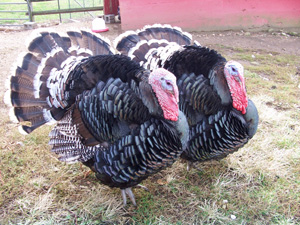 Turkeys have been, by far, the biggest surprise for me. I think I knew what to expect when we began raising the sheep—that they’d be, well, “sheepish.” The goats, frequently portrayed in cartoons eating tin cans, will nibble at just about anything. And chickens? Well, they just act chicken-like.
Turkeys have been, by far, the biggest surprise for me. I think I knew what to expect when we began raising the sheep—that they’d be, well, “sheepish.” The goats, frequently portrayed in cartoons eating tin cans, will nibble at just about anything. And chickens? Well, they just act chicken-like.
But the turkeys? They watch EVERYTHING you do and EVERYTHING that goes on in the barnyard. As young adults, they begin to rely on a precise feeding regimen and know exactly when and where the next feeding should occur.
Our flock is especially sensitive to the sound of heavy truck transmissions and will gobble, in unison, as one approaches. I think they think the school bus is some large yellow bird. Although we can’t see the bus when it’s about a half mile away and approaching, the turkeys begin to gobble and it’s my cue to call the kids. “I hear the turkeys…the bus is coming!”
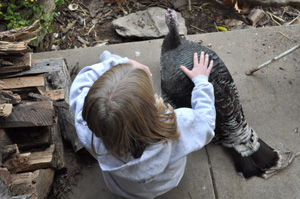
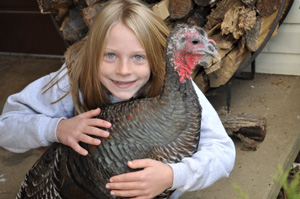 The other morning took the cake. Usually, they will wait on the porch for someone to make their way to the barn for their feeding. I had changed the screen door for the storm door the day before and as I sat at the computer a few feet away, I heard a singular “tap” on the storm door. Then it came again. I waited. There it was again. I went to check it out thinking it was someone’s knock. It was. I opened the door to see the three gobblers, having pecked at the plexiglass, standing on the doormat as if to say, “we’re ready for our corn now.” I laughed out loud—very loud—which started a gobbling reaction from them.
The other morning took the cake. Usually, they will wait on the porch for someone to make their way to the barn for their feeding. I had changed the screen door for the storm door the day before and as I sat at the computer a few feet away, I heard a singular “tap” on the storm door. Then it came again. I waited. There it was again. I went to check it out thinking it was someone’s knock. It was. I opened the door to see the three gobblers, having pecked at the plexiglass, standing on the doormat as if to say, “we’re ready for our corn now.” I laughed out loud—very loud—which started a gobbling reaction from them.
You can only imagine my excitement in visiting Koch’s Turkey Farm and seeing all of those turkeys! Many, many thanks to Duane and the Koch family for a fun visit!

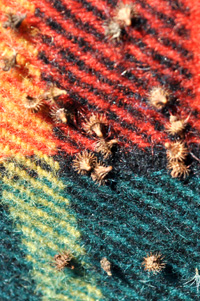
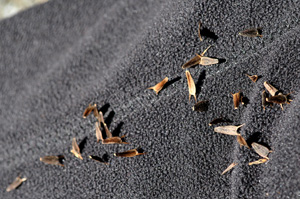
 I hadn’t made apple butter for years before this Fall (and I LOVE apple butter!).
I hadn’t made apple butter for years before this Fall (and I LOVE apple butter!).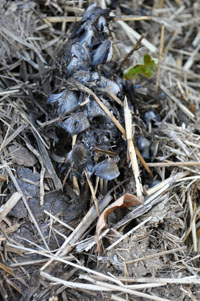 “Quick—get your camera and meet me down where we piled the sheep manure!”
“Quick—get your camera and meet me down where we piled the sheep manure!”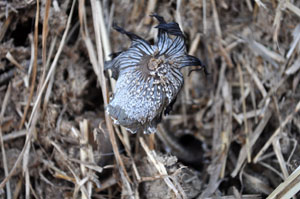
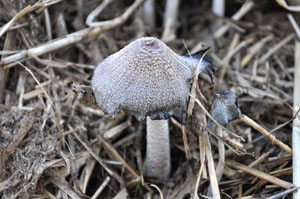 If you’ve ever noticed a small collection of colored “dust” on a leaf or piece of bark near mature mushrooms, you’ve probably witnessed a “spore print.” These are spores which have been released by the mushroom. The Coprinoid caps actually begin in an oval shape and as they mature, the gills liquefy, gently disintegrating. This is their method of reproducing; the spores are picked up and deposited by the wind.
If you’ve ever noticed a small collection of colored “dust” on a leaf or piece of bark near mature mushrooms, you’ve probably witnessed a “spore print.” These are spores which have been released by the mushroom. The Coprinoid caps actually begin in an oval shape and as they mature, the gills liquefy, gently disintegrating. This is their method of reproducing; the spores are picked up and deposited by the wind. 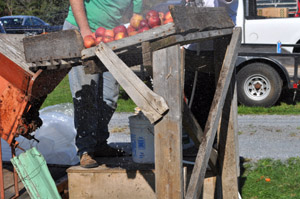 It was really something to behold. Buckets of apples were dumped and washed on the tray, then gently guided into one of the holders which made its way up the conveyor. They were milled at the top and the scratting collected until a handle released it onto the thick cloth lining a wood tray. Each tray’s cloth was folded over before another tray was placed on top. When a handful of trays had been stacked, the apples were pressed and the cider flowed!
It was really something to behold. Buckets of apples were dumped and washed on the tray, then gently guided into one of the holders which made its way up the conveyor. They were milled at the top and the scratting collected until a handle released it onto the thick cloth lining a wood tray. Each tray’s cloth was folded over before another tray was placed on top. When a handful of trays had been stacked, the apples were pressed and the cider flowed!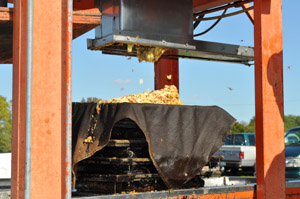
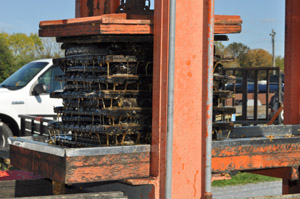 People (as well as bees) gathered to watch the process and, of course, have a taste. Imagine what this would have meant to a community hundreds of years ago…celebrating a summer’s worth of hard work, welcoming fall, and a delicious reason to gather.
People (as well as bees) gathered to watch the process and, of course, have a taste. Imagine what this would have meant to a community hundreds of years ago…celebrating a summer’s worth of hard work, welcoming fall, and a delicious reason to gather.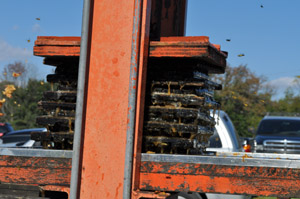
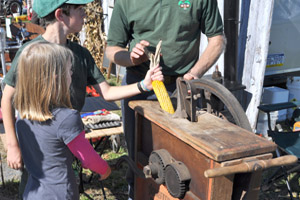 As we strolled past a corn sheller, the gentleman operating it pointed to Nathaniel and said, “Young man, your mom wants to make corn bread!!” Nathaniel looked up, quizzingly, as the man repeated, “she needs your help—go on out and gather a bushel of corn.”
As we strolled past a corn sheller, the gentleman operating it pointed to Nathaniel and said, “Young man, your mom wants to make corn bread!!” Nathaniel looked up, quizzingly, as the man repeated, “she needs your help—go on out and gather a bushel of corn.”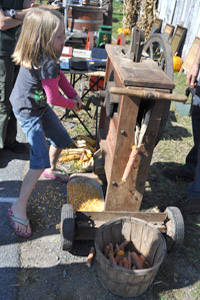
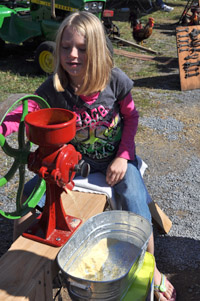 You can imagine they were both smiling by now as Natalie cranked the wheel and Nathaniel added the corn. Once the mill chewed the kernels off, they began spilling out the chute.
You can imagine they were both smiling by now as Natalie cranked the wheel and Nathaniel added the corn. Once the mill chewed the kernels off, they began spilling out the chute.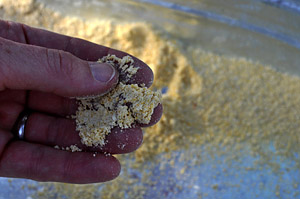 So they gathered the kernels and put them down the mill chute and began to crank. The bowl caught the light, yellow, cracked and milled corn.
So they gathered the kernels and put them down the mill chute and began to crank. The bowl caught the light, yellow, cracked and milled corn.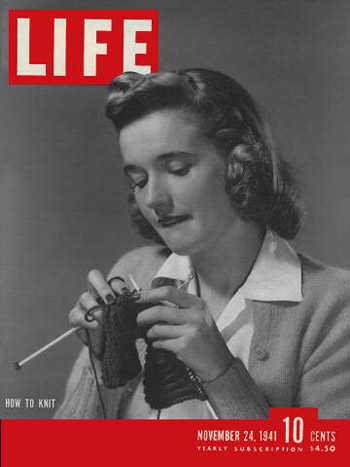 It’s November, 1941.
It’s November, 1941.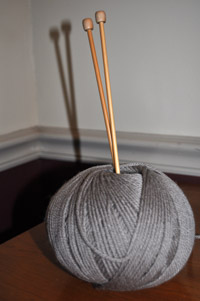 So, you see, knitting, most definitely, has a special place in our history. Whether you knit for fun or for “a purpose,” it’s a skill well worth pursuing.
So, you see, knitting, most definitely, has a special place in our history. Whether you knit for fun or for “a purpose,” it’s a skill well worth pursuing.
